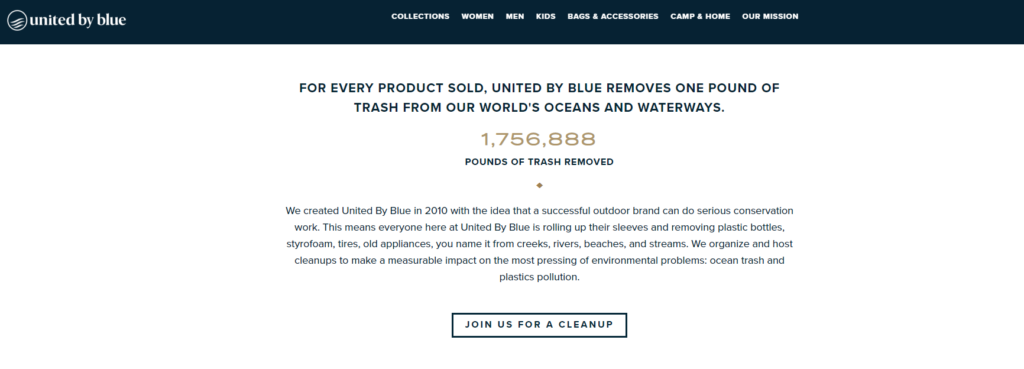Last year, 81% of consumers plan to shop direct-to-consumer brands within the next five years. It’s clear that direct-to-consumer (DTC) and boutique brands are disrupting retail by taking innovative and digital-first approaches to create loyal customers.
There are many reasons for brands to skip the middleman or third parties to deliver straight to customers. Top reasons include owning your own data and creating deeper relationships with buyers.
Are you thinking about selling direct-to-consumers? Take a look at what this strategy is and how sellers can set themselves up for success.
What does going Direct-to-consumer (DTC) mean?
Selling direct-to-consumer, commonly referred to as DTC or D2C, means you’re selling your products directly to your end customers. Sellers bypass any third-party retailers, wholesalers, or any other type of middlemen to deliver their products.
Recognizable examples of DTC brands include Casper, Warby Parker, and Dollar Shave Club. However, there are now thousands of sellers undertaking this unique approach. These DTC brands are leveraging mobile and digital channels that are bypassing traditional sales models.
DTC brands are usually sold exclusively online or specialize in a specific product category. However, top growing brands are expanding to other channels like their own storefront or exclusive partnerships with other retailers.
Why go Direct-to-consumers?
Direct-to-consumers brands are disrupting multiple industries from apparel and beauty to pet food and mattresses. What these firms have in common is that they’re digital-first and often focus on their mission, instead of just their products. In an overcrowded eCommerce space, these brands use digital tools like social media to build loyal audiences based on brand authenticity and high-quality products. It’s a type of experience that today’s consumers find valuable and even willing to pay a higher price for.
Here are some of the other major advantages of going direct-to-consumers:
Owning your data
To be hyper-focused on the customer experience, brands need to own their consumer data. Selling DTC allows you to collect first-hand data to do just that. Emerging marketing technology helps track every customer interaction so you can improve on it. You’ll have a constant feedback loop of actionable insight to continue to innovate on.
Cost Savings
Cutting out the middleman or other supply chain processes saves you extra costs. In the online space where margins are small to begin with, it’s paramount to protect your bottom line.
Brand Control
Direct-to-consumer brands have full control of their brand image. You’re not relying on anyone else to present your products. You own the relationship with your users and can nurture it over time. You can deliver the interactive relationship consumers are looking for.
2/3 of consumers expect direct brand connectivity.
Selling direct-to-consumer sounds appealing, but how do you ensure your success?
The more your DTC brand grows, the more difficult it can be to maintain control, especially if you take on venture capital or give up equity to an outside investor. But, if you haven’t hit complete market saturation, you constantly need capital to keep investing in marketing and inventory in order to scale. Luckily, there’s a financing option that provides eCommerce businesses with the fast funding they need without taking any equity. Payability helps DTC brands get paid for their sales the next-day, every day for their Amazon and other marketplace sales. They also offer Instant Advance which is a capital advance based on your future sales on Amazon, Shopify, Walmart, Newegg, and more. There are no credit checks associated with working with Payability and they’ll never ask you to give up any equity. Apply here to get started.
What to Focus for Success on Going Direct-to-consumer
Focus on these areas if you want to be successful at selling direct-to-consumers.
Brand Authenticity
Many successful DTC brands are born out of mission-driven initiatives, it’s not just about high-quality products. They’re selling being part of a movement or lifestyle. Their customers are participating in something larger than just another purchase of a product they want.
Even if there’s not a strong mission associated, DTC brands excel because of their distinct personalities and brand images. Every interaction with customers is transparent, direct, and memorable. Brands are leveraging digital channels like eCommerce and social media to create content that fuels interactive customer relationships. Consumers just can’t find that same type of brand interaction if they’re picking up a product on someone else’s shelves.
Examples:
United by Blue – Cleans up a pound of trash from our waterways for every product sold.
Everlane – Complete transparency of pricing and how much materials costs vs. the retail price

Digitally Native
Take a lesson from other successful DTC brands and see what innovative ways they’re using digital channels to reach customers.
“Digitally native vertical brands are maniacally focused on the customer experience and they interact, transact, and story-tell to consumers primarily on the web.”
– Andy Dunn, CEO @ Bonobos
This means leveraging online content to your advantage like your product pages, social media, newsletters, emails, and more. Consumers want to invest in more than a product, they’re looking for a valuable experience that connects them with a brand. Brands are turning customers into ambassadors to spread the word to others.
For example, digital native beauty brand Glossier founder Emily Weiss estimates that 90% of their customers come to them through word of mouth on social media channels.
The point is be where your customers are. And if your customers are doing most of their activity online, then your marketing better fit into their lifestyle.
Personalization
Look at any direct-to-consumer brand and you’re sure to find thoughtful ways of how they personalize the shopping experience for their customers. Customers aren’t just any other buyer to them, but rather a loyal counterpart in their journey to success. Being able to personalize your customer experience comes from maintaining and acting on your consumer data. You can use historical data to predict shopping intention and make better product recommendations. Your content will resonate better with shoppers from your product pages to your email marketing. Successful DTC brands usually have personalization tactics that are far ahead of other brands.
Fulfillment
If you sell exclusively online, then your fulfillment strategy is key to your success. You can sell all the products you want, but if you can’t consistently deliver to customers you’re going to eventually lose. Today’s consumers are not forgiving about bad delivery experiences.
84% of consumers say that they won’t return to a brand after just one poor delivery experience.
All it takes is one bad experience to erode brand image and customer loyalty. So, if there’s one area to excel at, it’s your eCommerce delivery strategy. Read more about why fulfillment is vital to the success of your online selling.
Going Direct-to-consumer Takes More than Just Quality Products
There’s a lot of high-quality products out there. The key is showing customer why they should pay (maybe even more) for yours over another. If there’s one major takeaway from our DTC examples, is that it’s all about creating transparent, direct, and memorable interactions with potential and current customers. Use digital channels and content available to you to fuel deep relationships and trust with your customers. Use your first-hand data to gleam actionable insights that help you predict your shopper’s intentions and give them the shopping experience they’re looking for.
Other articles to read:






[…] based 3PLs are usually the choice for Direct-to-Customer (DTC) brands looking for pick and pack […]
[…] based 3PLs are usually the choice for Direct-to-Customer (DTC) brands looking for pick and pack […]
[…] based 3PLs are usually the choice for Direct-to-Customer (DTC) brands looking for pick and pack […]
[…] has many advantages for a long-term strategy to win over customers. Look no further than direct-to-consumer brands who are disrupting the retail landscape by creating digital-first approaches to create loyal […]
[…] Wholesale, Retail, DTC […]